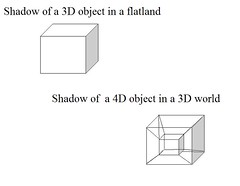Think Like Einstein
Just want to make my blog a little more fun for the visitors. I found some simple and interesting questions from NOVA Online which I think can help readers who have no knowledge in time travel to understand quickly. Trust me, the 4 questions will make you think like Einstein, don’t worry as they are not hard at all, really! You can post your answers in the comments if you are interested in knowing the answers.
1. Adding velocities
You're on a train that's moving forward at 50 mph. You throw a ball in the direction that the train is moving. Relative to you and the train, the ball leaves your hand travelling at 20 mph.
Question: From the point of view of someone standing alongside the tracks, how fast is the ball moving?
2. Speed of Light
OK. Everything so far makes sense. Let's move on to the speed of light for a moment.
Again, you're on a train. This time, though, the train is moving much faster—at half the speed of light, or 93,000 mps (miles per second). And instead of throwing a ball, you turn on a flashlight.
Question: How fast is the light travelling relative to the observer standing alongside the tracks?
3. The Speed of Light
Here's our last question. This one's like the previous one, but with a twist. Again, you're on a train moving at 93,000 mps, and again, you turn on your flashlight.
Question: How fast does the light travel relative to you?
*You should have realised a paradox in this question, otherwise you shouldn’t move on to question 4.
4. The Solution
By now you probably understand the conflict: How is it possible that light always travels at the same speed, no matter how fast its source is moving? Einstein, when he was 16, thought about the same thing.
Are you familiar with the equation v=d/t? All it says is velocity (speed) equals distance travelled divided by time.
If we use this equation in our first scenario—the one where you threw the ball—it works out fine. For you, within the train, as well as for someone standing by the tracks, we can calculate the speed of the ball by adding the distance the train travelled and the distance the ball travelled.
The equation does not work out so well in the second scenario, though, because we're dealing with the speed of light, so the "v" in the equation always has to be 186,000 miles per second.
Something has to give.
Question: What can we infer from what we've seen so far?
Choy
1. Adding velocities
You're on a train that's moving forward at 50 mph. You throw a ball in the direction that the train is moving. Relative to you and the train, the ball leaves your hand travelling at 20 mph.
Question: From the point of view of someone standing alongside the tracks, how fast is the ball moving?
2. Speed of Light
OK. Everything so far makes sense. Let's move on to the speed of light for a moment.
Again, you're on a train. This time, though, the train is moving much faster—at half the speed of light, or 93,000 mps (miles per second). And instead of throwing a ball, you turn on a flashlight.
Question: How fast is the light travelling relative to the observer standing alongside the tracks?
3. The Speed of Light
Here's our last question. This one's like the previous one, but with a twist. Again, you're on a train moving at 93,000 mps, and again, you turn on your flashlight.
Question: How fast does the light travel relative to you?
*You should have realised a paradox in this question, otherwise you shouldn’t move on to question 4.
4. The Solution
By now you probably understand the conflict: How is it possible that light always travels at the same speed, no matter how fast its source is moving? Einstein, when he was 16, thought about the same thing.
Are you familiar with the equation v=d/t? All it says is velocity (speed) equals distance travelled divided by time.
If we use this equation in our first scenario—the one where you threw the ball—it works out fine. For you, within the train, as well as for someone standing by the tracks, we can calculate the speed of the ball by adding the distance the train travelled and the distance the ball travelled.
The equation does not work out so well in the second scenario, though, because we're dealing with the speed of light, so the "v" in the equation always has to be 186,000 miles per second.
Something has to give.
Question: What can we infer from what we've seen so far?
Choy






